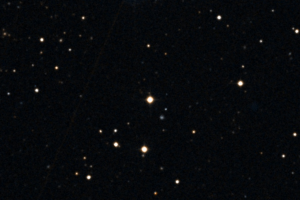TOI-4515 b, a “warm Jupiter” with a turbulent story. The study: “The GAPS programme at TNG L. TOI-4515 b: An eccentric warm Jupiter orbiting a 1.2 Gyr-old G-star” of I. Carleo (Instituto de Astrofísica de Canarias) recently appeared on A&A

The study of the orbital parameters of exoplanets can shed light on their past. An important quantity in this context is the eccentricity of elliptical orbits, which is the ratio between the distance of the foci over the major semiaxis. Eccentricity is equal to zero when the ellipse degenerates into a circle or equal to one when it degenerates into a line. Thus, high values of eccentricity indicate a deviation from circular orbits, suggesting that the planet has experienced gravitational interactions that excited its orbit.
One noticeable result is that exoplanets of the same class often show a wide distribution of eccentricities. In particular, exoplanets belonging to the class of “warm Jupiters” (gaseous giants with orbital periods between 10 and 200 days) are observed with both low and high eccentricities. This broad range may be a consequence of gravitational interactions with binary companions of the central star or with other planets in the system.
In the framework of the GAPS (Global Architecture of Planetary Systems) project, a team of researchers led by I. Carleo (IAC – Instituto de Astrofísica de Canarias) has discovered a new warm Jupiter orbiting around the star TOI-4515, a G-type star with an age of about 1.2 billion years. This planet (TOI-4515 b) has an orbital period of about 15 days, a radius similar to Jupiter, despite being more than two times more massive. Additionally, the planet has a very eccentric orbit (e=0.46). The orbital parameters of the planet (both the eccentricity and a parameter called “normalized angular momentum deficit”) suggest that the orbit of TOI-4515 b has been gravitationally excited. However, deep observations at high spatial resolution do not confirm the presence of any stellar companion to the star. Thus, the planet must have experienced a chaotic evolution with several gravitational interactions with other planets of the system, resulting in the observed final architecture. The study is based on an extensive set of observations, mainly from the NASA satellite TESS, with the HARPS-N spectrograph mounted on the Telescopio Nazionale Galileo, and instrumentation for high spatial resolution images mounted on the Southern Astrophysical Research Telescope and the Kitt Peak National Observatory. The research is described in the paper: “The GAPS programme at TNG L. TOI-4515 b: An eccentric warm Jupiter orbiting a 1.2 Gyr-old G-star,” recently published in the journal Astronomy & Astrophysics. Among the coauthors are astronomers S. Benatti, D. Locci, A. Maggio, and J. Maldonado from INAF – Astronomical Observatory of Palermo.
The figure (click here to visualize it entirely) shows a SDSS image of TOI-4515 (the star at the center of the field).
Mario Giuseppe Guarcello ( follow mariospiegacose) ( mariospiegacose) ( follow mariospiegacose)
Follow the Astronomical Observatory of Palermo on Facebok and on Instagram
Subscribe the Youtube channel of the Astronomical Observatory of Palermo
